Your Guide to Christmas in Italy
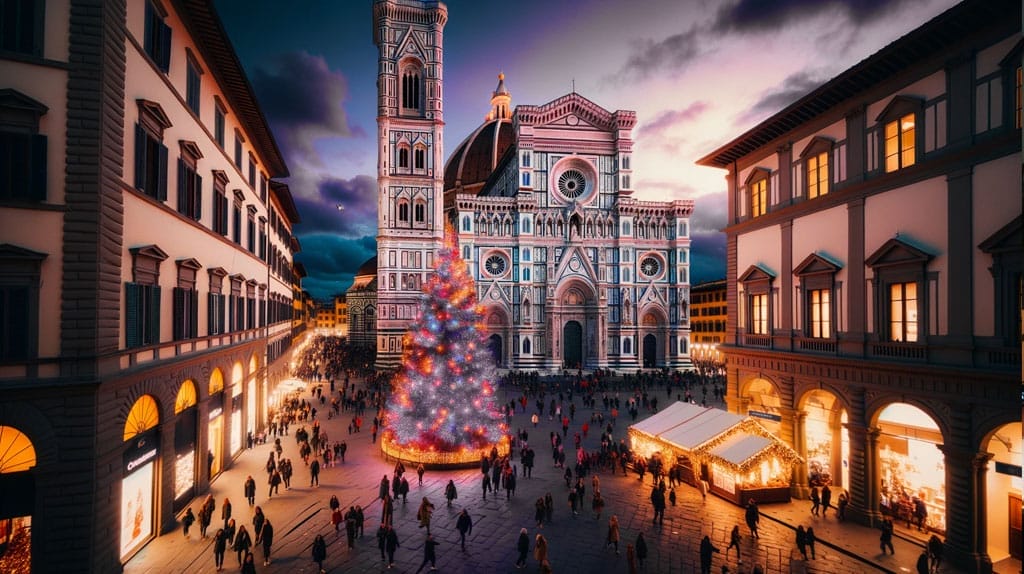
Italy is known for its rich cultural traditions, and Christmas is no exception. Italian Christmas traditions are a magical time filled with festivities, delicious food, and joyful celebrations. We take you on a journey through the enchanting traditions of Christmas in Italy. From pre-Christmas festivities to Epiphany celebrations, we will explore the customs, recipes, and unique celebrations that make an Italian Christmas truly special.
Quick Summary
- Italian Christmas traditions are steeped in history and culture.
- Pre-Christmas festivities include the Natale lunch and Venice Christmas Boat.
- The Candelara Festival and Novena are must-visit events during the Christmas season.
- Italian cuisine is central in Christmas celebrations, with dishes like Panettone and Feast of Seven Fishes.
- Christmas Eve traditions include the Cenone della Vigilia and midnight mass.
Christmas in Italy is a tapestry of rich traditions, interwoven with historical roots that date back centuries. As the winter chill sets in, cities and towns across the country come alive with festive lights, bustling markets, and the melodious strains of carols echoing through ancient cobblestone streets.
From the snow-capped peaks of the Alps to the sun-kissed shores of Sicily, each region offers its unique take on the festive season, blending age-old customs with modern celebrations. This celebration forms an integral part of European Christmas traditions, with Italy offering its own distinct flavor.
The story of Christmas in Italy is not just about the present-day festivities, but also a journey into the past, exploring the origins and evolution of traditions that make the Italian Christmas experience truly special. This article explores the heart of what makes Christmas in Italy a magical and unforgettable affair.
A Background to Italian Christmas Traditions
Christmas, known as “Natale” in Italian, has deep roots in Italy, tracing back not only to the Christian celebration of the birth of Jesus Christ but also to ancient Roman traditions.
The winter solstice festival, Saturnalia, was a significant event in the Roman calendar, where people feasted, exchanged gifts, and decorated their homes with greenery. This festival honored Saturn, the god of agriculture, and it was a time of merriment and the upturning of social norms.
As Christianity spread throughout the Roman Empire, many of these customs were incorporated into the celebration of the birth of Jesus, leading to the fusion of traditions that laid the foundation for Christmas in Italy. Over the centuries, regional customs, local saints, and folklore have further enriched the Italian Christmas experience.
One of the most iconic is the legend of La Befana, a witch-like figure who brings gifts to children on the eve of Epiphany. Stemming from pre-Christian traditions and later intertwined with Christian narratives, La Befana represents the blending of pagan and Christian influences.
Similarly, in various regions of Italy, there are unique dishes and rituals that are integral to the Christmas festivities. The nativity scene or “presepe”, for instance, has strong ties to the town of Naples and showcases the artistic and spiritual dedication of its people. Through these varied influences, Christmas in Italy has evolved into a tapestry of rich traditions that uniquely blend the sacred and the festive, making it a truly special celebration.
Pre-Christmas Festivities
Before Christmas Day, Italians enjoy festivities that bring families and communities together in the spirit of the season. One popular tradition is the Natale lunch, where families gather for a traditional meal and exchange gifts. This festive occasion often includes dishes like panettone and pandoro, traditional Italian Christmas cakes.
Italians also love to decorate their homes and streets with beautiful Christmas lights and decorations. In cities like Rome and Milan, you can enjoy the spectacular Christmas light displays and holiday markets. The markets offer a range of traditional crafts, food, and drinks, creating a vibrant atmosphere.
If you find yourself in Venice during the Christmas season, you will be treated to a magical event known as the Venice Christmas Boat. This festive event sees a brightly decorated boat parading through the canals, spreading holiday cheer. Christmas caroling is also a cherished tradition in Italy, with groups of singers filling the streets with joyful melodies.
“The Christmas season in Italy is a time for joy, love, and togetherness. The pre-Christmas festivities are a wonderful opportunity to share the joy with family and friends.”
As Christmas Day approaches, Italians partake in various traditions. The Cenone della Vigilia, a grand Christmas Eve dinner, is a feast filled with fish and other delectable dishes. Many also attend midnight mass, known for its beautiful music and ornate churches. Some may choose to observe a fast until the Christmas Eve dinner.
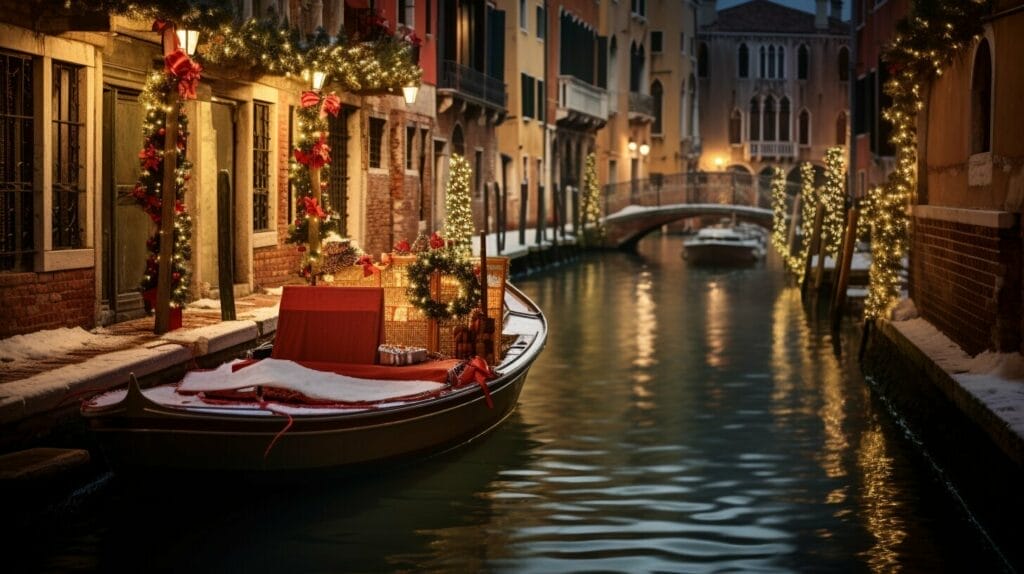
In Venice, one of the most popular pre-Christmas traditions is the Venice Christmas Boat. The city is surrounded by canals, so it’s no surprise that this magical event is held on water. The brightly-decorated boat parades through the canals, spreading holiday cheer and leaving a trail of festive lights in its wake. As the boat passes by, locals and tourists alike can be heard singing Christmas carols and spreading the holiday spirit.
Christmas caroling is also a cherished tradition in Italy. Groups of singers can be found filling the streets with joyful melodies, spreading cheer to those around them. The tradition of Christmas caroling dates back centuries, with groups of singers often visiting the homes of friends and family to share the gift of music. Whether you’re in Venice or another part of Italy, you’re sure to come across a group of carolers spreading holiday cheer.
Christmas Eve Traditions
Christmas Eve is a very special day in Italy, as families gather to celebrate and partake in various traditions. One of the most important traditions is the Cenone della Vigilia, which is a lavish Christmas Eve dinner. It usually starts with a light antipasti course, followed by a variety of fish dishes, such as baccalà (salt cod), calamari, and shrimp. At the end of the meal, a traditional dessert called “panettone” is served, along with other sweets and fruit.
Many Italians also attend midnight mass, known as “La Messa di Mezzanotte,” at their local church on Christmas Eve. The mass is known for its beautiful music and ornate churches. After returning home, families may exchange small gifts or partake in the Urn of Fate gift exchange tradition mentioned earlier.
Some Italians observe a fast until the Cenone della Vigilia dinner, while others choose to eat a lighter meal during the day. This fast is known as “La Vigilia,” and it is believed that abstaining from meat and indulgent foods helps prepare both the mind and body for the upcoming feast.
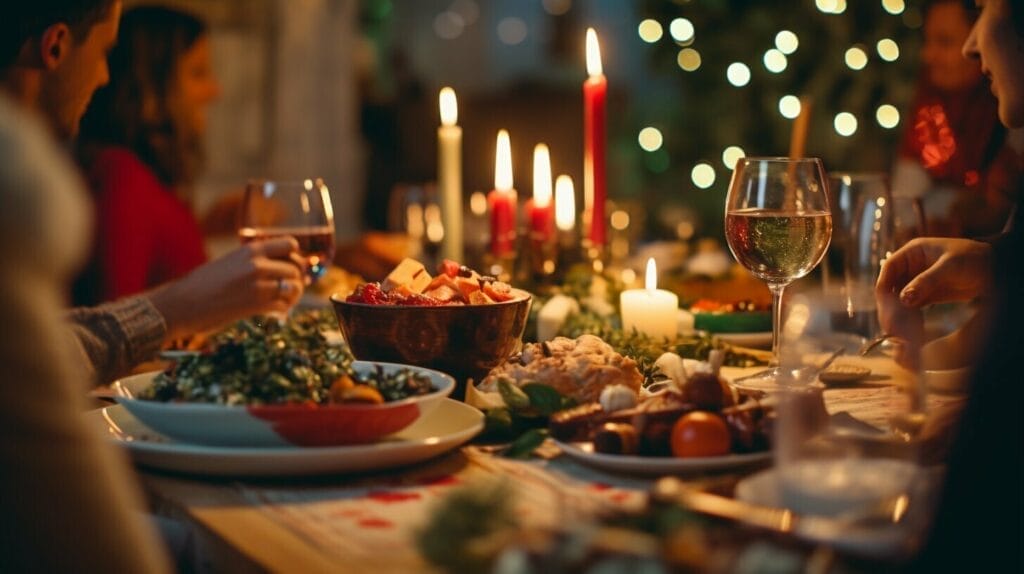
While attending midnight mass on Christmas Eve, you will experience beautiful music and witness ornate churches filled with stunning decorations. Many churches also have nativity scenes or “Presepi” that depict the story of the birth of Jesus. Attending midnight mass is a cherished tradition that is both spiritual and festive, bringing families and communities together.
Candelara Festival and Novena
The Candelara Festival is a beautiful tradition that takes place in the charming town of Candelara. This festive event is a must-visit during the Christmas season, as the entire town is adorned with thousands of candles, creating a magical and enchanting atmosphere that will leave you awestruck. The Candelara Festival is an excellent opportunity to experience the beauty of Italian Christmas traditions.
In addition to the Candelara Festival, many Italians participate in the Novena, a nine-day period of prayer leading up to Christmas. The Novena is a cherished tradition that deepens one’s spiritual connection and helps them appreciate the true meaning of Christmas.

If you’re lucky enough to witness the Candelara Festival or participate in the Novena, you’ll gain a deeper appreciation for the rich culture and traditions of Italy. These meaningful and beautiful customs are what make Italian Christmas celebrations truly special.
Italian Christmas Foods Traditions
Italian cuisine plays a central role in Christmas celebrations. Italian Christmas food traditions are a captivating blend of regional flavors, historical influences, and familial love, woven into the fabric of the festive season.
From the sumptuous “Feast of Seven Fishes” celebrated on Christmas Eve to the sweet allure of “panettone” and “torrone,” each dish tells a story of centuries-old customs, local ingredients, and the warmth of Italian hospitality. Whether it’s a hearty pasta dish from the snow-capped north or a citrus-infused dessert from the sun-kissed south, the culinary delights of an Italian Christmas are a testament to a nation’s enduring passion for food and family.
Italian Christmas drinks are also a treat. Warm up with a cup of spiced wine, or indulge in a rich and creamy hot chocolate.

| Italian Christmas Foods | Italian Christmas Drinks |
|---|---|
| Panettone | Spiced Wine |
| Feast of Seven Fishes | Hot Chocolate |
| Torrone | Espresso |
| Struffoli Honey Balls | Bellini Cocktail |
The Feast of Seven Fishes: A Culinary Tradition
The Feast of Seven Fishes, known as “La Vigilia” or “La Cena della Vigilia” in Italian, is a time-honored Christmas Eve tradition celebrated by many Italian families, particularly those from southern regions. The feast is characterized by a lavish dinner that includes seven different fish dishes, though in some families, the number of dishes can vary, sometimes even exceeding seven.
The tradition finds its roots in the Roman Catholic practice of abstaining from meat on the eve of significant religious holidays, with fish being the chosen alternative. Over time, this simple abstention evolved into a culinary extravaganza, with each dish being a showcase of regional flavors, ingredients, and cooking techniques.
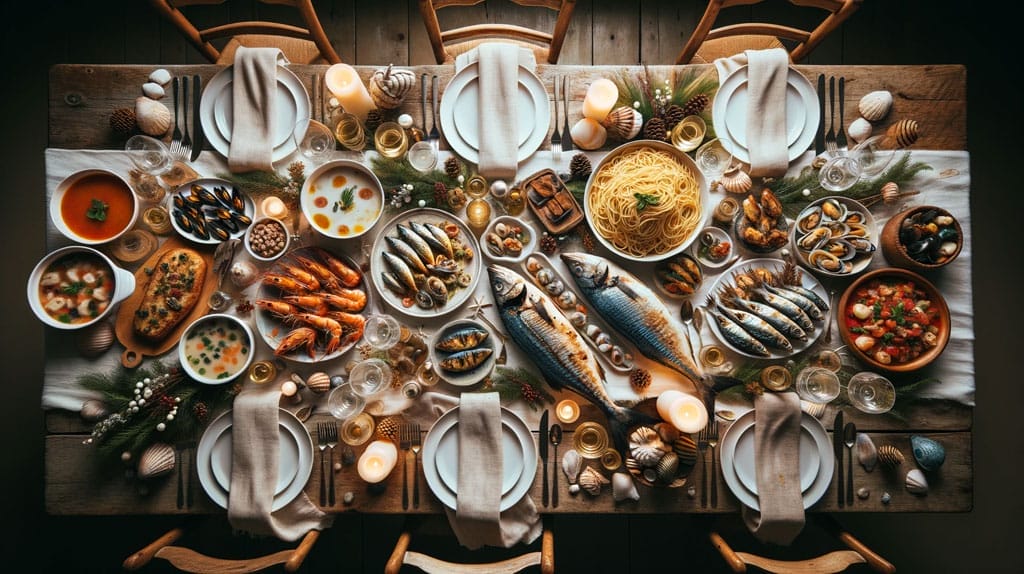
The number seven in the Feast of Seven Fishes holds deep symbolic significance. While there isn’t a universally agreed-upon reason for the number, many believe it represents the seven sacraments of the Catholic Church.
Others suggest it might symbolize the seven days of creation or the seven hills surrounding Rome. Regardless of the origins, the feast is a testament to the Italian knack for blending religious observance with culinary artistry.
From crispy fried calamari and anchovies to rich pasta with seafood sauces and baked fish dishes, the variety ensures that the meal is not just a spiritual observance but also a gastronomic delight, bringing families together in celebration and gratitude.
Torrone and Struffoli: Delicious Italian Christmas Treats
Italian cuisine plays a central role in Christmas celebrations. From roasted meats and pasta to seafood extravaganzas, holiday feasts are never complete without some traditional dishes. But no festive meal is truly complete without some sweet treats! And in Italy, two popular desserts that are synonymous with Christmas are torrone and struffoli honey balls.
| Torrone | Struffoli Honey Balls |
|---|---|
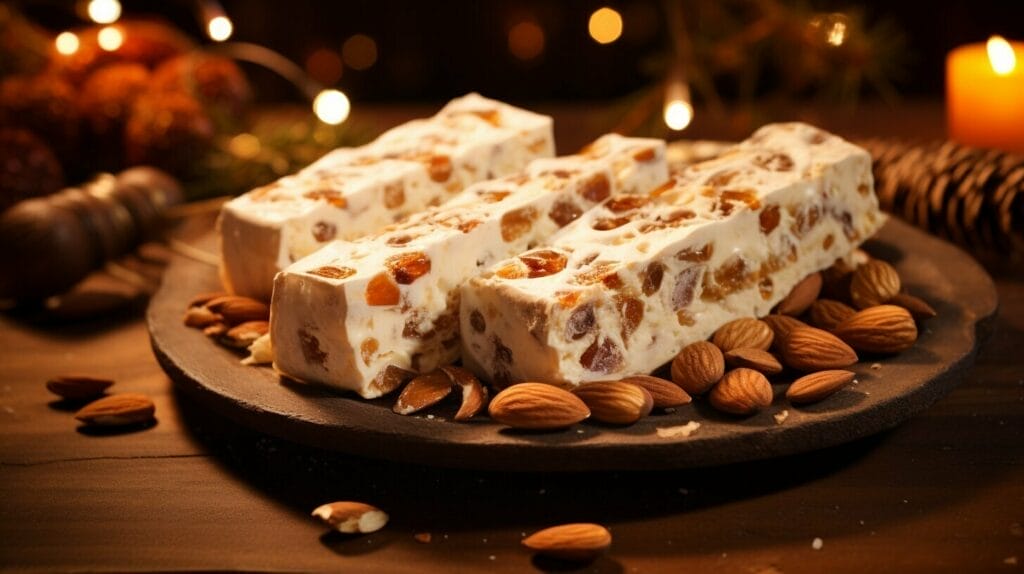 |  |
| Torrone, a soft and chewy nougat made with honey, almonds, and egg whites, is a popular Italian Christmas treat. The word “torrone” is derived from the Latin word “torrere”, meaning “to toast”, as the nougat is traditionally toasted under the sun. Today, torrone comes in many varieties, from hard and crunchy to soft and chewy, and is enjoyed by all generations during the holiday season. | Struffoli honey balls are another classic dessert made of deep-fried dough coated in honey. The dough is cut into small, bite-sized pieces and rolled into balls that are then drizzled with honey and sprinkled with colorful sprinkles. Struffoli honey balls make for a festive and sweet snack, perfect for sharing with friends and family. |
Whether you prefer the chewy sweetness of torrone or the crunchy bite of struffoli honey balls, these traditional Italian Christmas treats are sure to add an extra touch of magic to your holiday celebrations.
Urn of Fate Gift Exchange and Tombola
One of the unique Christmas traditions in Italy is the Urn of Fate gift exchange. Instead of picking gifts for each other, the Urn contains gifts, and each person selects a wrapped present at random. This adds an element of surprise and excitement to the gift-giving. It’s a fun way to exchange presents with family and friends.
Another popular tradition is playing Tombola, similar to bingo. This game is a classic Italian pastime during the holidays, and families and friends gather around the table to participate. It’s a great way to bond and have fun during the festive season.
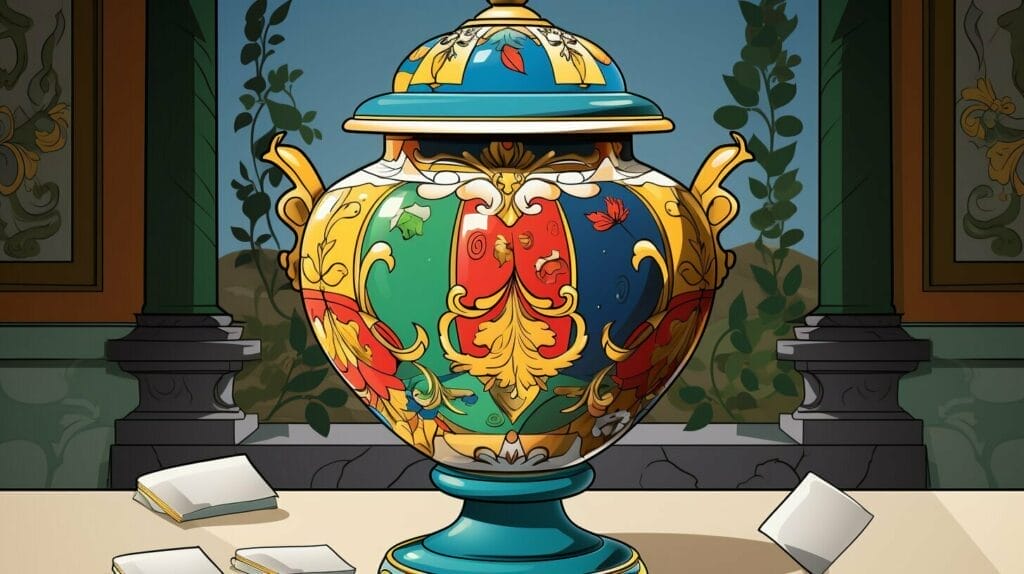
Both the Urn of Fate gift exchange and Tombola are great ways to enjoy the holidays with family and friends, embrace Italian culture, and create memories that will last a lifetime.
Christmas Day and Beyond
After the anticipation of Christmas morning, the rest of the day is spent with loved ones, enjoying a festive feast. The Christmas Day feast is a cherished Italian tradition that brings families together to enjoy a meal filled with delicious dishes and sweet treats.
One popular dish is roasted meats, often accompanied by a variety of pasta dishes. Other traditional foods include lentil soup, a symbol of prosperity and good luck for the New Year. The day after Christmas, or Giorno di Santo Stefano (St. Stephen’s Day), is a public holiday in Italy, where families continue to gather and enjoy leftovers from the previous day’s feast.
Italian Christmas celebrations continue after Christmas Day, with the focus shifting to New Year’s Eve and New Year’s Day. On New Year’s Eve, or Capodanno, Italians enjoy festive parties, complete with fireworks and music. They also follow the tradition of burning the Ceppo, a Yule log, which is said to bring good luck for the coming year. Meanwhile, markets and fairs offer a range of crafts and treats to enjoy.
New Year’s Day sees Italians indulging in a delicious dish of lentils, whether in soup or cooked with cotechino sausage, as a symbol of good luck and prosperity for the coming year. After the festivities, many Italians enjoy relaxing outings or spend time with family and friends, reflecting on the joys of the holiday season.
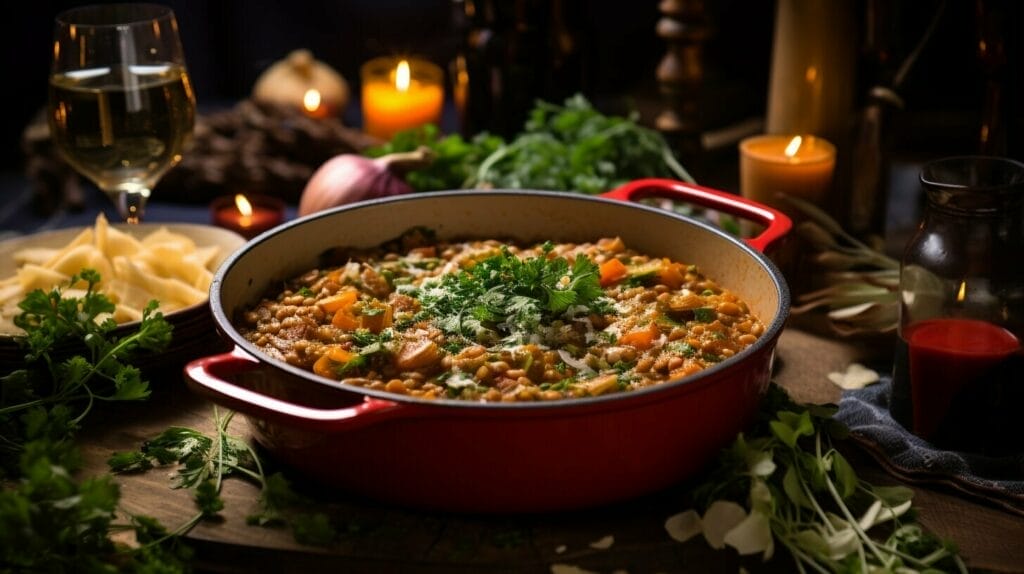
As the year comes to a close, Italians celebrate with gusto on Capodanno (New Year’s Eve). The night is filled with festive parties and fireworks, and families gather together to welcome the new year with enthusiasm. Decorative traditions are also an integral part of this celebration.
Presepe (Nativity scenes) are a popular decoration in Italian homes during the Christmas season. The Neapolitan Presepe is particularly famous for its intricate details and craftsmanship. Families also burn the Ceppo, a Yule log, to bring good luck for the coming year.
Folklore and superstitions also surround the holiday season in Italy. For example, it is believed that wearing red underwear on New Year’s Eve brings good luck. Additionally, some people spend the evening with a coin in their shoe, hoping to attract wealth in the new year.
Another popular tradition is to attend the Verona Christmas Market, where visitors can find unique gifts and delicious treats. This market is known for its festive atmosphere and beautiful decorations.

In the days following Capodanno, many Italians enjoy post-Christmas traditions such as relaxing outings and quality time with family and friends.
La Befana and Epiphany Celebrations
As Christmas draws to a close, Italians prepare to celebrate La Befana and Epiphany. La Befana is a kind witch who brings gifts and treats to children on the night of January 5th. According to legend, she missed her chance to join the Three Wise Men on their journey to visit baby Jesus, so she spends each year searching for him, stopping at every child’s home along the way to deliver presents.
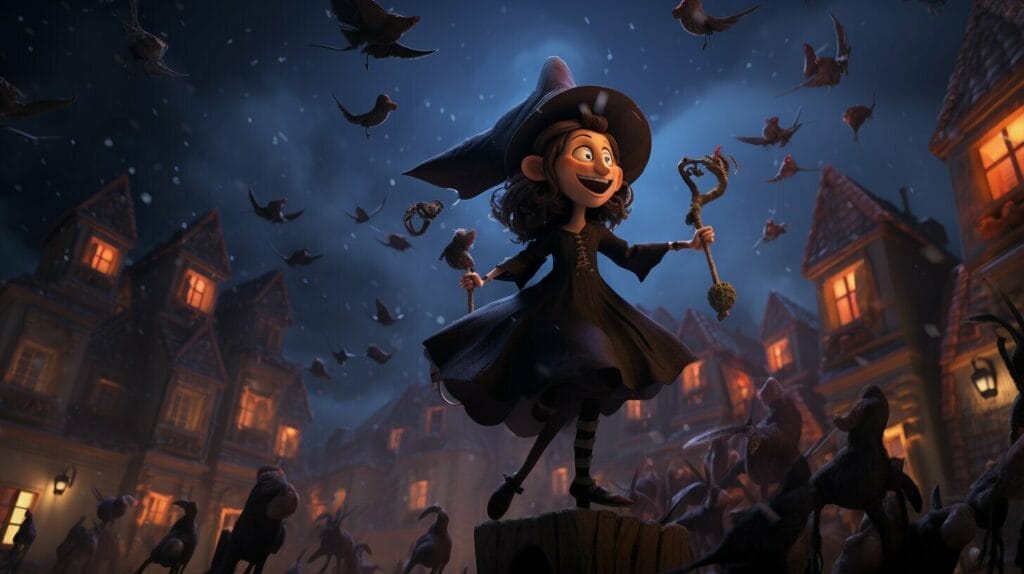
Eager children leave out stockings or baskets for La Befana to fill with treats. In some regions, she is said to arrive on a broomstick and descend down chimneys, leaving small gifts and sweets for the good children and lumps of coal for the naughty ones.
On January 6th, Italy celebrates Epiphany, also known as the Feast of the Three Kings. Festive parades and religious processions mark this day of joy and celebration. Families gather for a special meal, often including traditional dishes such as homemade pasta and roasted meats. Desserts such as Panettone and Torrone are also enjoyed.
FAQ
What are some popular pre-Christmas festivities in Italy?
One popular tradition is the Natale lunch, where families gather for a traditional meal. This festive occasion often includes dishes like panettone and pandoro, traditional Italian Christmas cakes.
What is the Venice Christmas Boat and why is it significant?
The Venice Christmas Boat is a magical event where a brightly decorated boat parades through the canals, spreading holiday cheer. It symbolizes the start of the Christmas season in Venice.
What is the Candelara Festival and why should I visit it?
The Candelara Festival, held in the town of Candelara, is a charming event where the streets are adorned with thousands of candles, creating a magical atmosphere. It is a must-visit during the Christmas season.
What are some traditional Italian Christmas foods and drinks?
Italian cuisine plays a central role in Christmas celebrations. One iconic dessert is the Panettone, a sweet bread filled with dried fruits and nuts. Another traditional dish is the Feast of Seven Fishes, a seafood extravaganza enjoyed on Christmas Eve. Italian Christmas drinks, such as spiced wines and hot chocolate, are also a treat.
What are Torrone and Struffoli?
Torrone is a soft and chewy nougat made with honey, almonds, and egg whites. Struffoli are deep-fried dough balls coated in honey. These sweet treats are popular during the holiday season in Italy.
What are some Christmas Eve traditions in Italy?
On Christmas Eve, Italians enjoy a grand dinner known as the Cenone della Vigilia, filled with fish and other delectable dishes. Many also attend midnight mass, known for its beautiful music and ornate churches. Some may choose to observe a fast until the Christmas Eve dinner.
What is the Urn of Fate gift exchange?
Instead of traditional gift-giving, Italians often participate in the Urn of Fate gift exchange during Christmas. Each person selects a gift from an urn, adding an element of surprise and excitement.
What happens on Christmas Day in Italy?
Christmas Day is a time for feasting and spending quality time with loved ones. Families gather for a lavish Christmas Day feast, enjoying traditional dishes such as roasted meats and pasta.
How do Italians celebrate New Year’s Eve?
New Year’s Eve, known as Capodanno, is celebrated with festive parties and fireworks. It is a time of joy and celebration as Italians welcome the new year.
Who is La Befana and what is her significance?
La Befana is a kind witch who brings gifts and treats to Italian children on the night of January 5th. Her arrival is eagerly awaited, and she symbolizes the end of the Christmas season.
What are some post-Christmas traditions in Italy?
After the Christmas celebrations, Italians enjoy relaxing outings and quality time with family and friends. It is a time to unwind and cherish the holiday season’s memories.
What can I expect at Italian Christmas markets?
Italian Christmas markets offer a range of traditional crafts, food, and drinks, creating a vibrant atmosphere. The Verona Christmas Market is a popular destination, offering unique gifts and delicious treats.
What are some traditions associated with Epiphany in Italy?
Epiphany, also known as the Feast of the Three Kings, is celebrated on January 6th. Festive parades and religious processions mark this day of joy and celebration.
What role does music and dance play in Italian Christmas celebrations?
Music and dance are integral parts of Italian Christmas celebrations. Zampognari, traditional bagpipers, entertain crowds with their festive tunes. They add an extra touch of magic to the holiday season.




